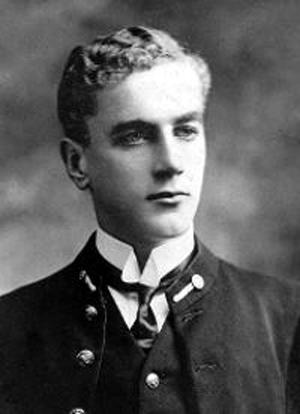
copyright © Wartime Heritage Association
Website hosting courtesy of Register.com - a web.com company
Wartime Heritage
ASSOCIATION
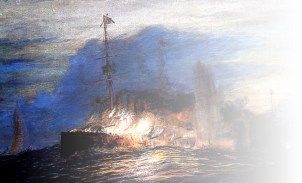
Remembering World War I
Yarmouth Connections


Name:
Malcolm Cann
Rank:
Midshipman
Service No:
MO/401
Regiment/Service:
Royal Canadian Navy
HMS Good Hope
Date of Birth:
April 20, 1895
Place of Birth:
Yarmouth, NS
Date of Death:
November 1, 1914
Age:
19
Killed 50 miles off the coast of Chile in an encounter
between the HMS Good Hope and the German warship
Scharnhorst
Memorial:
Halifax Memorial
Panel Reference
Panel 1.
First Yarmouth Casualty in World War I
Commemorated on Page 1 of the First World War Book of Remembrance
Displayed in the Memorial Chamber of the Peace Tower in Ottawa on January 9, January 10, and January 11
Commemorated on the Yarmouth Memorial
Malcolm Cann was the son of Hugh Bradford Cann and Augusta L. Cann, of Yarmouth, Nova Scotia. He
was the seventh of ten children. He attended the Yarmouth County Academy.
In the fall of 1910 he was one of thirty-four candidates who wrote entrance examinations for the newly
created Royal Navy College of Canada. The course at the Naval College was to be two years in length
with a first year cost of $400.00 and a second year cost of $250.00. This included board, lodging,
uniforms and all expenses. The course was based on that of the English naval colleges. On graduation
the students as commissioned midshipmen cadets were to receive pay of two dollars per day.
Malcolm was one of twenty cadets that joined the school on January 11, 1911. They were sworn in and
grouped into two classes of ten each under their own Captain. In the course of the second summer,
1912, the cadets were detailed for a summer cruise on HMCS Niobe, one of the two warships purchased
by Canada from Great Britain. The ship visited Yarmouth in late July and following that visit on the trip
to Shelburne ran aground on Cape Sable.
HMCS Niobe was re-floated; however, was out of service for many months and was not in commission at
the outbreak of World War I.
Malcolm Cann’s class graduated in January, 1913 and many of the class spent the spring and summer on
HMS Berwick around the coasts of Ireland and Scotland. In September the group steamed for Bermuda as
part of the 4th Cruiser Squadron. While in Barbados their warship was ordered to the east coast of
Mexico, at that time in revolution, to help protect British interests as Vera Cruz.
On September 22, 1913, Malcolm’s father died and a message was sent to Malcolm aboard HMS Berwick
off the coast of Mexico.
In December, 1913 HMS Berwick returned to Halifax and the cadets were given one month’s leave and
Malcolm spent his leave in Yarmouth, NS. with his family.
On January 10, 1914 the cadets reported to Halifax to undergo a six month course. Some of this was in
communications as the College had its own wireless system.
Members of the 1913 graduating class were appointed as Midshipmen to HMCS Niobe at Halifax on August
2, 1914. This was Malcolm’s second tour of duty aboard HMCS Niobe, but it was short lived and on August
15, seven of the class were transferred to HMS Suffolk while that ship was at Halifax. However,
arrangements were made for four midshipmen to join the complement of HMS Good Hope. Lots were
drawn and Malcolm Cann (Yarmouth NS aged 19), Arthur Wiltshire Silver (Halifax, NS aged 20), William
Archibald Palmer (Ottawa, ON aged 20), and John Victor William Hatheway (Granville, NS aged 19) were
transferred to HMS Good Hope off New York.
The Naval Squadron, including the HMS Good Hope was to
cruise the South Atlantic in search of the German Battle
Fleet of Admiral von Spee. The two Squadrons came
together some forty miles off the coast of Coronel, Chile
on Sunday, November 1, 1914. In battle formation there
was initially an advantage to the British as the setting sun
was behind them, blinding the German gunners but
serving to light up the German ships into perfect targets.
But the range was not close enough for the outdated
British guns. To close the distance the British ships were
turned four points toward the German ships who with
superior speed and room to manoeuvre turned away and
kept out of range.
As the sun sank, the British squadron became outlined and now stood out as targets while the German
vessels, nearer the shore were lost to sight in the distant land. The encounter lasted one hour. The
Scharnhorst made repeated hits on HMS Good Hope. At 7:20 HMS Good Hope was seen to slow and
stagger under shelling. The foredeck was ablaze and clouds of smoke and steam billowed upward.
Hundreds of bagged charges of cordite exploded and the ship sank shortly after. HMS Monmouth was
also sunk with all crew lost. A third ship, HMS Glasgow was badly damaged.
Among the dead were Malcolm Cann and the three other Canadian Midshipmen transferred to HMS Good
Hope.
News of the battle spread slowly. On November 5, the Halifax Herald reported rumours of a battle off
the coast of Chile, but the Admiralty did not confirm one had occurred. The November 6 issue
acknowledge a battle had taken place, but that Good Hope had not been involved. Not until November 7
did the Herald print the headline, “WE WILL NEVER FORGET OUR FOUR BRAVE BOYS”, with pictures of
Palmer, Silver, the Good Hope and Monmouth, and noting, “As HMS Good Hope was at Halifax early in the
war her loss causes particular sorrow here. When this cruiser steamed up Halifax harbour on August 14
her crew lined the deck and with her ship’s band playing patriotic airs she was the object of interest to
those on the waterfront.
On November 7, the Yarmouth Light also published a War Extra, announcing, “GOOD HOPE LOST, AND
MONMOUTH BADLY DAMAGED IN SUNDAY’S BATTLE ACCORDING TO LATEST ADMIRALTY REPORTS”. The
paper printed the names and addresses of the four lost midshipmen and observed, “There will be
profound sympathy for the parents of those boys, ...”
The Town of Yarmouth was stunned by the news. With the death of Malcolm Cann, Yarmouth became
“galvanized into wartime activity.” In the weeks following November 7, 1914 many additional young men
volunteered for service.
A week later, the Herald commented:
... none of these four midshipmen was over twenty years of age, and their death, though it was in
service of Empire, is particularly pathetic. They are among the First of Canada’s youth to be in
numbered in the present war as ones who have died for their country. These four midshipmen are
indeed the first of those in the Canadian Naval Service to give their lives for the Empire.
In fact, Malcolm Cann of Yarmouth, NS, along with John Victor William Hatheway of Granville NS, William
Archibald Palmer of Ottawa Ontario, and Arthur Wiltshire Silver of Halifax NS were the first four
Canadians lost in the First World War.
Malcolm Cann is Commemorated on:
The Halifax Memorial
Memorial Plaque Royal Naval College of Canada
Family Monument (Mountain Cemetery, Yarmouth , N.S.)
(Photo Credit: Ida Lee Brewer Cann)
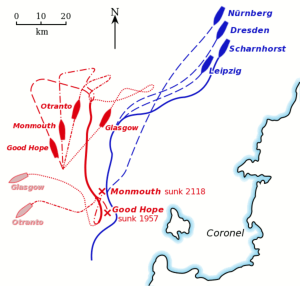
![[Sympathy of King George and Queen Mary was telegraphed to each family] Government, London, November 13, 1914 Mrs. H. B. Cann, Yarmouth, N.S. The King and Queen deeply regret the loss you and the navy have sustained by the death of your son in the service of his country. Their Majesties truly sympathize with you in your sorrow. Private Secretary](whawwi_htm_files/250076.png)

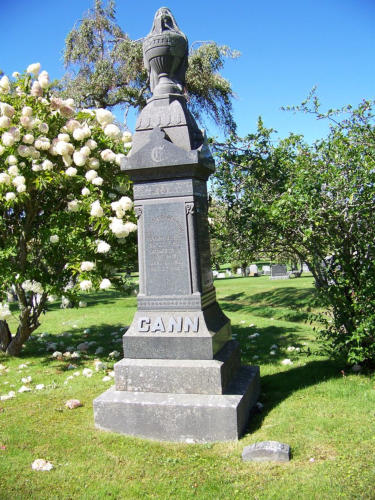
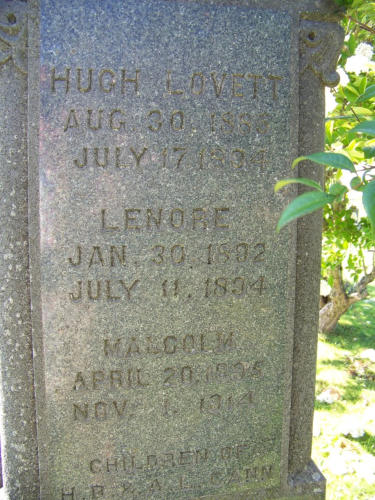
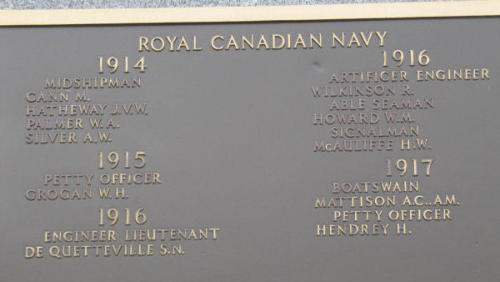
Sources:
Canadian Virtual War Memorial
findagrave.com
WWI Document Archive
“A Monument Speaks” A Thurston; 1989 (pp 75-85)
“First To Die - The First Canadian Navy Casualties in the First World War” Bryan Elson ((pp. 77-79)
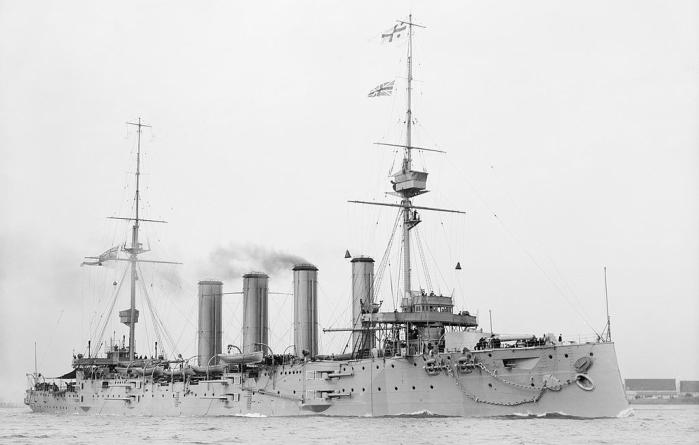
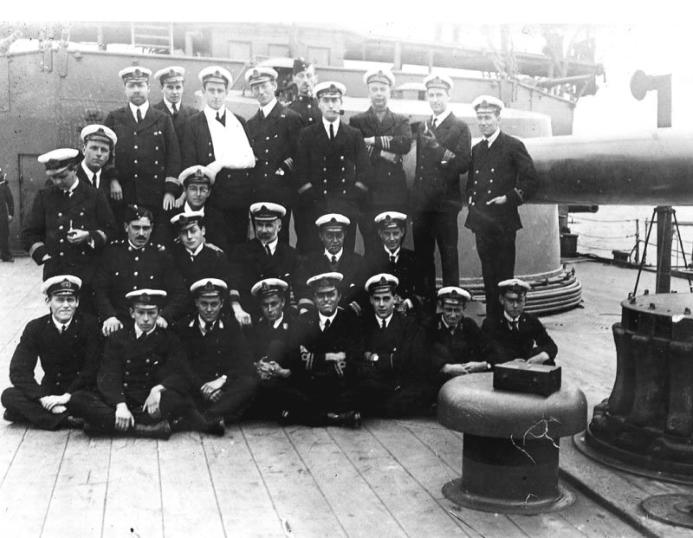
Some Officers and Midshipmen aboard HMS GOOD HOPE.
(Midshipman M. Cann is in the front row, fourth from the left)
Falkland Islands, October 18, 1914.

Battle of Coronel, November 1, 1914
Malcolm Cann

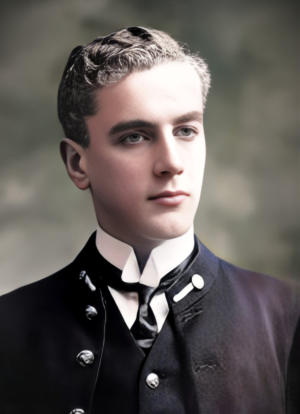


- World War I - Menu
- WWI Stories and Articles
- Photos - Yarmouth Soldiers
- Selection of World War I Songs
- WWI Casualties of Yarmouth, NS
- Those Who Served - Yarmouth, NS
- WWI Casualties Digby Co. NS
- WWI Casualties Shelburne Co. NS
- Merchant Mariners (1915) Yarmouth, NS
- Canadian Forestry Corps - Non Yarmouth Birth/Residence Enlistments
- US Draft Registry - Yarmouth NS Born


- World War II - Menu
- WWII Stories and Articles
- Telegraphist Air Gunners
- WWII Casualties of Nova Scotia
- US Casualties with NS Connection
- Far East/Pacific Casualties with NS Connection
- Merchant Navy Casualties Nova Scotia
- Nova Scotia WWII Casualties Holten Canadian War Cemetery
- D-Day Casualties - Nova Scotia
- CANLOAN Program Casualties - Nova Scotia
- Battle of the Bulge Casualties - Nova Scotia
- WWII Casualties Yarmouth NS
- Yarmouth Casualties - RCAF RAF Canadian Army WWII
- Yarmouth Co., Marriages WWII
- Casualties Non-Born/Residents with Connection to Yarmouth Co., Nova Scotia.
- WWII Casualties Digby Co., NS
- Non-Nova Scotian WWII Casualties Buried in Nova Scotia
- WWII RCAF Casualties Aged 16-18
- Brothers/Sisters Who Served - World War II
